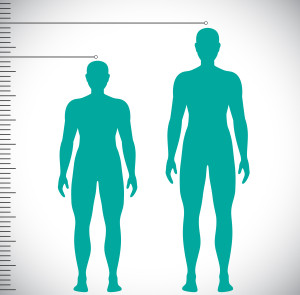A recent study of close to 200,000 men and women found that shorter people are at higher risk of coronary artery disease than their taller counterparts, with every 2.5-inch (6.35-cm) change in height affecting their level of risk by 13.5%.

Earlier studies established an inverse relationship between height and risk of coronary artery disease, but the reasons for this relationship remained unclear due to confounding factors such as poor socio-economic environment or inadequate nutrition during childhood, said Nilesh Samani, MD, Professor of Cardiology at the University of Leicester, United Kingdom, and lead investigator of the latest research.
The new findings mark the first time that height alone has been shown to raise the risk of coronary artery disease. The study, published in the New England Journal of Medicine, was conducted in the United Kingdom using genetic data provided by the CADIoGRAMplusC4D Consortium, of which the University of Ottawa Heart Institute is a member.
“The beauty about DNA is that it cannot be modified by one’s lifestyle or socio-economic conditions,” said Dr. Samani. “Therefore, if shorter height is directly connected with increased risk of coronary heart disease, one would expect that these variants would also be associated with coronary heart disease; and this is precisely what we found.”
After establishing that shorter people are at higher risk, the study then looked closer at 12 other risk factors and found that two were related to genes regulating height—LDL, or “bad,” cholesterol and triglycerides (a type of fat) in the blood. However, this association could explain only a small proportion (less than a third) of the relationship between shorter height and coronary artery disease. The researchers assumed the rest is most likely explained by shared biological processes that determine both height and the development of the disease at the same time.

